The Seed is Planted
When the Rev. Dr. Edward Eckel arrived in Tulsa in 1929 to serve as the fifth rector of Tulsa’s Trinity Episcopal Church, no one could have guessed the legacy he would leave almost 65 years later. Dr. Eckel and his wife had been impressed with the “homes for the aged” they’d seen during their travels in England. Tulsa, they believed, could benefit from such a home.
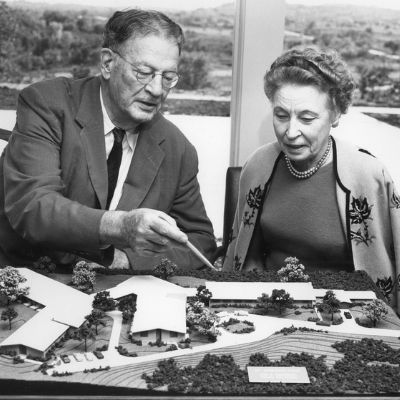
By 1950, Dr. Eckel was working on making this dream a reality. he shared his vision with Roy Hoffman, an Oklahoma City banker and leader in Oklahoma Episcopal affairs. Soon, Mr. Hoffman and his wife began a drive for funds and the Diocese of Oklahoma established a non-profit corporation for the project. Dr. Eckel’s passion for this venture was spreading.
In 1958, the dream moved one step closer to reality. After an extensive search for the right location, a 22.5-acre plot of land on a hill overlooking downtown Tulsa was purchased for $45,000. A few months later, Trinity parishioners donated enough funds to cover the entire cost. In today’s economy, that’s more than $391,000; an impressive amount to be collected from the congregation.
Saint Simeon’s is Born
With the site secured, construction could begin. Of course, such a huge undertaking didn’t happen overnight. it took two years before the “Saint Simeon’s Home for the Aged” opened its doors. Phase I included 12 resident rooms, a lounge, a kitchen, and a dining room. Just four residents—three women and one man—called Saint Simeon’s home those first few months. It was a truly “home-like” atmosphere, as reliable help proved hard to retain and the residents found themselves pitching into help with the cooking and cleaning. Soon, however, a hostess was hired—Mrs. Welch—along with a cook, maid, and yardman. Operations began to run smoothly.
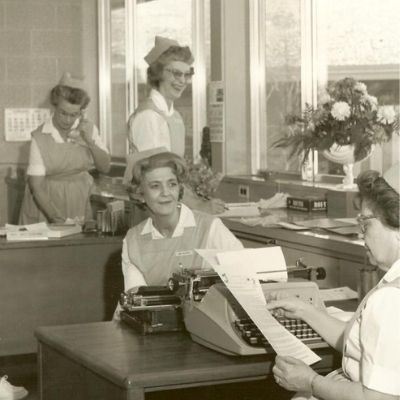
With these new hires came the need for more financial support. The women on the board came up with a solution, forming the Home’s Auxiliary in February of 1961 to broaden support. By the end of the year, the Auxiliary had grown to more than 300 members and raised $27,000 (more than $230,000 in today’s dollars).
These successful efforts emboldened the Board, and they soon moved forward with a five-year plan for the Home. By 1963, the Home hired its first administrator and within two years had adopted plans for 34 additional resident rooms, a larger dining room and kitchen, a laundry, and an arts and crafts room.
Saint Simeon’s Name Change
In 1964, Saint Simeon’s Home for the Aged adopted a new name and became known, officially, as Saint Simeon’s Episcopal Home. More changes were coming as well. The British model of a facility for “ambulatory persons in reasonably good health” that had inspired Dr. Eckels and his wife to create Saint Simeon’s needed to evolve. “We must plan infirmary facilities,” Dr. Eckels wrote to a friend. “We don’t want to neglect our sick.” In the spring of 1966, yet another of Dr. Eckels’ visions became a reality: a 21-bed infirmary was completed and a registered nurse was hired as medical director. By 1970, 21 of Saint Simeon’s 68 residents were in the infirmary.
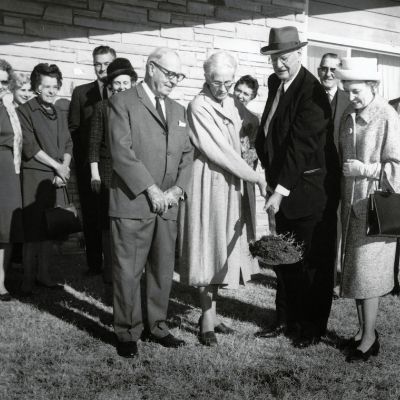
Saint Simeon’s was growing. The Board had purchased an additional 19 acres adjoining the property to allow for future growth. The Auxiliary had grown so large (more than 400 members) meetings had to be held off-campus. The waiting list for the Home exceeded 30 applicants. In fact, interest in the Home was so strong, an additional residential wing—the E-Wing—was completed in 1977.
As the 70’s progressed, it became clear that providing independent, active residential living no longer met the needs of the majority of residents. Infirmary-care tenants made up 50 percent of Saint Simeon’s population and the waiting list showed 90 percent in need of such care.
Growing Into a New Role
In the 80’s, two additional residential wings were added, along with two duplexes and a new medical center/infirmary. Still, the Home was near capacity as the waitlist swelled to more than 100 applicants.
Construction continued, adding Saint Anna’s Chapel and the Common Room. But more room wasn’t all that was required. As the residents needs continued to change, the Home kept pace and embraced its new role, filing a Certificate of Need to upgrade Wings F and G to “intermediate medical facility care.” In addition, a formal task force was convened to develop guidelines for future expansion and a strategy on how to strike a balance between retirement-living facilities and higher care levels. This group also began studying the growing need to provide care for senile dementia and Alzheimer’s, both afflictions that were beginning to show themselves in some current residents.
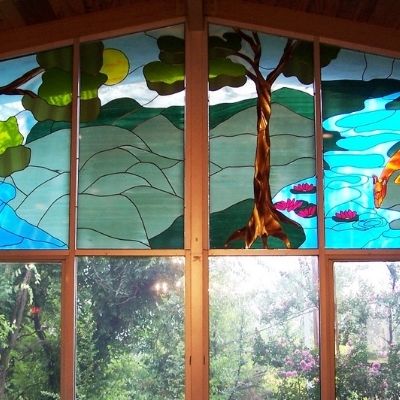
As the 1990’s began, Saint Simeon’s prepared to launch its largest and most challenging expansion to date: the creation of a $5 million senile dementia and Alzheimer’s facility. By the end of 1991, two-thirds of the funds had been raised (half coming from the Episcopal Diocese of Oklahoma) and by mid-1992, ground was broken. The Saint Simeon’s Memory Center opened debt-free in 1994 and, due to its advanced design, was toured and studied by medical professionals from across the country.
In 1997, residents and families alike were treated to a new ice cream parlor, adding to the comfortable ambiance that set Saint Simeon’s apart from other area facilities.
New Millennium, New Opportunities
With the new millennium, Saint Simeon’s was preparing for a decade that would see more expansion and facility upgrades than in all the previous 40 years combined.
Expanding beyond the main campus, Saint Simeon’s established an Adult Day Center at St. Dunstan’s Episcopal Church in south Tulsa. The program, which served seniors suffering from Alzheimer’s and other dementia-related illnesses, also provided a welcomed respite for family and other caregivers.
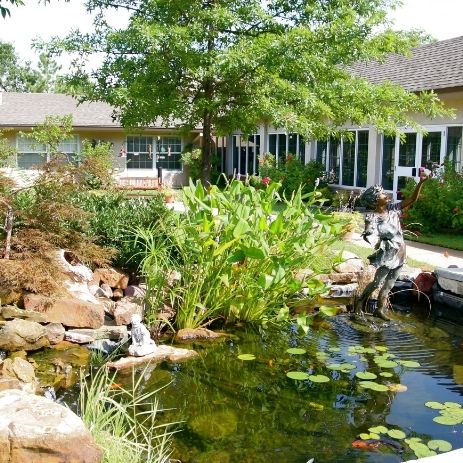
Back at Saint Simeon’s, the nearly bare Health Care Center Courtyard was transformed with the addition of a water garden pool, bronze statue, new plantings, and two beautiful peacocks donated for the enjoyment of Saint Simeon’s residents. Other courtyards soon received makeovers as well.
In 2005, residents were treated to even more upgrades. A “Great Room” was added to the Health Care Center, offering a beauty/barber shop and a spa-like bathing area, as well as dedicated areas for life enrichment activities. The end of the decade, however, saw the Home’s most ambitious plans.
In 2009, a $23.3 million campaign to replace three wings with a new Assisted Living Center including 60 new apartments, a state-of-the-art Wellness Center, plus new activity, entertainment, and dining areas, was successfully completed.
Because of the generosity of Saint Simeon’s donors, the Dotson Assisted Living Center could be completed debt-free. The next year, 50 years after the home’s first four residents occupied them, the original A, B, and C wings were razed as part of the project. The last 10 years of the 2000’s saw dynamic growth. Saint Simeon’s has continued to upgrade and improve, including the renovation of 5,300 square feet of communal living and dining areas in the Health Care Center known as the Bishops’ Plaza. Skilled Nursing was added and in 2019, Saint Simeon’s took a leading role in Parkinson’s Disease care in Northeast Oklahoma. Saint Simeon’s became the first Struthers Parkinson’s Care Network (now known as a Community Partner in Parkinson’s Care — Certified Community in Oklahoma. A grant provided Parkinson’s-specific exercise equipment and staff continuously receives specialized Parkinson’s training, undergoes performance audits, and maintains a specific standard of care unmatched in the area.
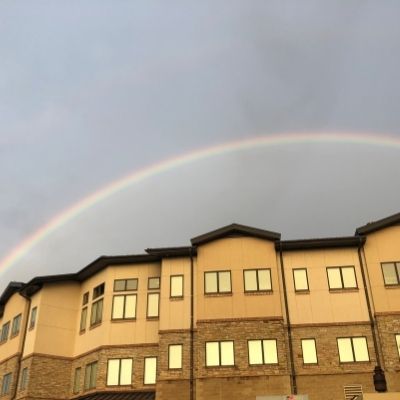
In 2022, Saint Simeon’s announced its latest evolution of services focused on person-centered care by introducing the Saint Simeon’s Medical Resort. This dedicated wing of private medical suites allows Saint Simeon’s to provide the best care and therapy available for those in need of post-acute transitional medical care.
The Future Looks Bright
Today, we see the fruits of Dr. Eckel’s vision, his tenacity, and his heart for ministry every time we drive through the gates onto the beautiful campus at 3701 North Martin Luther King, Jr. Blvd. Just as important, however, have been the generous gifts of our donors. A non-profit from the start, Saint Simeon’s is built on the belief that we can provide the best care at reasonable costs. Residents’ fees pay operating costs and generous contributions handle everything else. That’s what has made our history so successful…and it’s what we rely on for a bright future.